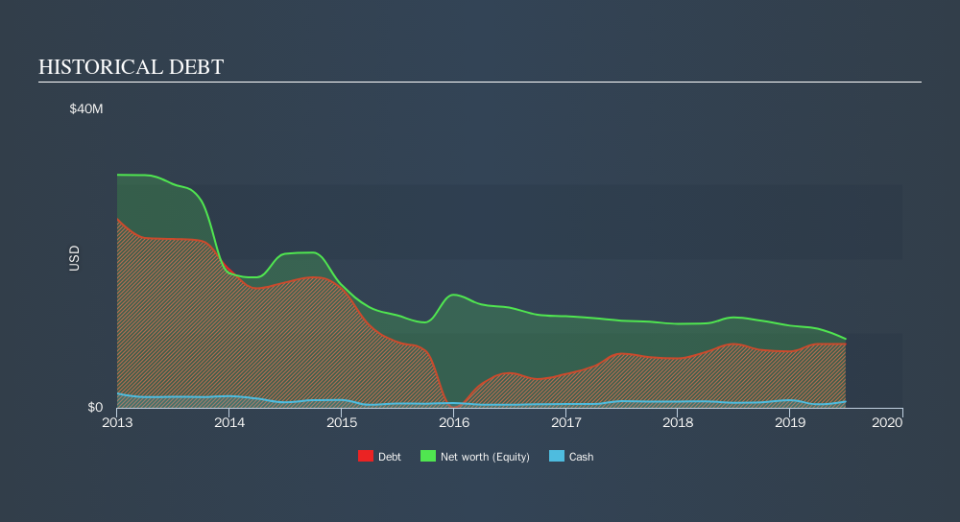Is Industrial Services of America (NASDAQ:IDSA) A Risky Investment?

Some say volatility, rather than debt, is the best way to think about risk as an investor, but Warren Buffett famously said that 'Volatility is far from synonymous with risk. It's only natural to consider a company's balance sheet when you examine how risky it is, since debt is often involved when a business collapses. As with many other companies Industrial Services of America, Inc. (NASDAQ:IDSA) makes use of debt. But should shareholders be worried about its use of debt?
When Is Debt A Problem?
Debt is a tool to help businesses grow, but if a business is incapable of paying off its lenders, then it exists at their mercy. Ultimately, if the company can't fulfill its legal obligations to repay debt, shareholders could walk away with nothing. While that is not too common, we often do see indebted companies permanently diluting shareholders because lenders force them to raise capital at a distressed price. Of course, debt can be an important tool in businesses, particularly capital heavy businesses. When we examine debt levels, we first consider both cash and debt levels, together.
View our latest analysis for Industrial Services of America
What Is Industrial Services of America's Net Debt?
As you can see below, Industrial Services of America had US$8.54m of debt at June 2019, down from US$9.57m a year prior. However, it does have US$844.0k in cash offsetting this, leading to net debt of about US$7.70m.
How Strong Is Industrial Services of America's Balance Sheet?
The latest balance sheet data shows that Industrial Services of America had liabilities of US$8.78m due within a year, and liabilities of US$8.87m falling due after that. Offsetting this, it had US$844.0k in cash and US$5.41m in receivables that were due within 12 months. So its liabilities outweigh the sum of its cash and (near-term) receivables by US$11.4m.
When you consider that this deficiency exceeds the company's US$9.13m market capitalization, you might well be inclined to review the balance sheet intently. In the scenario where the company had to clean up its balance sheet quickly, it seems likely shareholders would suffer extensive dilution. When analysing debt levels, the balance sheet is the obvious place to start. But you can't view debt in total isolation; since Industrial Services of America will need earnings to service that debt. So if you're keen to discover more about its earnings, it might be worth checking out this graph of its long term earnings trend.
Over 12 months, Industrial Services of America made a loss at the EBIT level, and saw its revenue drop to US$58m, which is a fall of 2.1%. We would much prefer see growth.
Caveat Emptor
Importantly, Industrial Services of America had negative earnings before interest and tax (EBIT), over the last year. Indeed, it lost a very considerable US$2.0m at the EBIT level. When we look at that alongside the significant liabilities, we're not particularly confident about the company. It would need to improve its operations quickly for us to be interested in it. For example, we would not want to see a repeat of last year's loss of US$3.1m. In the meantime, we consider the stock to be risky. When we look at a riskier company, we like to check how their profits (or losses) are trending over time. Today, we're providing readers this interactive graph showing how Industrial Services of America's profit, revenue, and operating cashflow have changed over the last few years.
When all is said and done, sometimes its easier to focus on companies that don't even need debt. Readers can access a list of growth stocks with zero net debt 100% free, right now.
We aim to bring you long-term focused research analysis driven by fundamental data. Note that our analysis may not factor in the latest price-sensitive company announcements or qualitative material.
If you spot an error that warrants correction, please contact the editor at editorial-team@simplywallst.com. This article by Simply Wall St is general in nature. It does not constitute a recommendation to buy or sell any stock, and does not take account of your objectives, or your financial situation. Simply Wall St has no position in the stocks mentioned. Thank you for reading.

